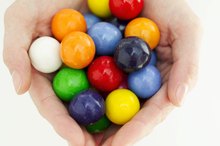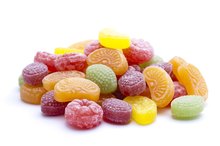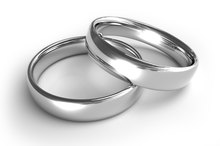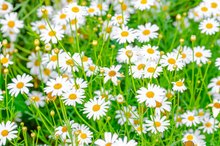What does fact checked mean?
At Healthfully, we strive to deliver objective content that is accurate and up-to-date. Our team periodically reviews articles in order to ensure content quality. The sources cited below consist of evidence from peer-reviewed journals, prominent medical organizations, academic associations, and government data.
- Collegium Antropologicum: Chromotherapy in the Regulation of Neurohormonal Balance in Human Brain--Complementary Application in Modern Psychiatric Treatment.
- Collegium Antropologicum: Chromotherapy in the Regulation of Neurohormonal Balance in Human Brain--Complementary Application in Modern Psychiatric Treatment.
- Oxford University Press: A Critical Analysis of Chromotherapy and Its Scientific Evolution
- Oxford University Press: A Critical Analysis of Chromotherapy and Its Scientific Evolution
The information contained on this site is for informational purposes only, and should not be used as a substitute for the advice of a professional health care provider. Please check with the appropriate physician regarding health questions and concerns. Although we strive to deliver accurate and up-to-date information, no guarantee to that effect is made.
Color Therapy for Weight Loss
Color therapy has been used for centuries to treat a number of physical and mental health problems. Also referred to as chromotherapy, it is based on the principal that specific colors are activators or inhibitors of physiological, biological and biochemical processes in your brain, such as the synthesis of hormones, according to a review in the 2008 issue of "Collegium Antropologicum." According to BHIA Organization, a branch of the medical site Healthcare Media International, color can be used in a number of ways to treat problems 2. Light therapy is a common option, but you can also explore colored crystals, Bach flower remedies and aromatherapy based on oils and flowers of certain colors and even a color-related diet.
Basics
According to the BHIA Organization, colors affect our mood and energy and as such can be used to treat or affect many aspects of our health and lives 2. Color therapy is a form of vibrational healing 25. Colors affect the pituitary, which in turn affect the entire metabolism. Because color therapy hasn’t been properly studied, most of the results should be considered anecdotic and might or might not work for you.
Appetite Suppression
Motivational Colors for Exercising
Learn More
According to Reader’s Digest, the color blue suppresses appetite, so making it part of your eating plan can help your weight loss efforts. Blue plates, a blue tablecloth or even painting the kitchen blue can all help. Colors in the red group, on the other hand, increase appetite, so they’re best avoided when trying to lose weight. The color-therapy expert website Lightstreamers recommends exchanging the small bulb inside your fridge for a blue one so you’re less tempted to snack every time you open the fridge.
- According to Reader’s Digest, the color blue suppresses appetite, so making it part of your eating plan can help your weight loss efforts.
- The color-therapy expert website Lightstreamers recommends exchanging the small bulb inside your fridge for a blue one so you’re less tempted to snack every time you open the fridge.
Increased Metabolism
The color red increases appetite and shouldn’t be used in your kitchen. However, according to Lightstreamers, red also increases metabolism, so it might be a good addition to your weight loss program. To include the color red in your weight loss program without tying it to foods, you could make red solarized water. This is done by wrapping a clear glass with red cellophane paper and putting the glass in the sunlight. After a few hours, the water will be energized with the color red and ready to drink.
- The color red increases appetite and shouldn’t be used in your kitchen.
Home Process
Blue 1 Side Effects
Learn More
According to ColorMatters.com, blue is not a common color in nature, so your body automatically reacts against any blue food 4. If you cook, try using blue food dye on the meals you prepare. Adding a few drops to rice, pasta or bread can significantly reduce your attraction to the dish and cause you to eat less. If you can’t afford to change the paint or replace the curtains in your home, add touches of the chosen color in small areas around the kitchen or dining room. Introduce one change at a time so you can see what works and what doesn't.
- According to ColorMatters.com, blue is not a common color in nature, so your body automatically reacts against any blue food 4.
- Adding a few drops to rice, pasta or bread can significantly reduce your attraction to the dish and cause you to eat less.
Debate
According to a 2005 study published by Oxford University Press, the use of colors to treat the body and the mind seem to be effective. However, no scientific proof exists and the most complete, in-depth studies were all done prior to the 1960s. Because healing through colors or chromotherapy doesn’t use any tangible items, such as herbs, researchers believe it’s harder to prove what works and what doesn’t.
Related Articles
References
- Collegium Antropologicum: Chromotherapy in the Regulation of Neurohormonal Balance in Human Brain--Complementary Application in Modern Psychiatric Treatment.
- BHIA Organization: What is Color Therapy
- Oxford University Press: A Critical Analysis of Chromotherapy and Its Scientific Evolution
- Color Matters: Color and Food Matters
- Colour Therapy Healing: Solarized Water
- Elliot AJ. Color and psychological functioning: a review of theoretical and empirical work. Front Psychol. 2015;6:368. doi:10.3389/fpsyg.2015.00368
Writer Bio
Tammy Dray has been writing since 1996. She specializes in health, wellness and travel topics and has credits in various publications including Woman's Day, Marie Claire, Adirondack Life and Self. She is also a seasoned independent traveler and a certified personal trainer and nutrition consultant. Dray is pursuing a criminal justice degree at Penn Foster College.









